Key takeaways:
- Iterative development enhances flexibility and encourages continuous user feedback, significantly improving product usability.
- Clear objectives and regular user testing during each iteration are crucial for maintaining focus and guiding development effectively.
- Using appropriate management tools like Trello, Slack, and Git fosters collaboration and helps track progress, ultimately streamlining the iterative process.
- Common challenges include resistance to change, time management issues, and the need for clear communication among team members to prevent misunderstandings.
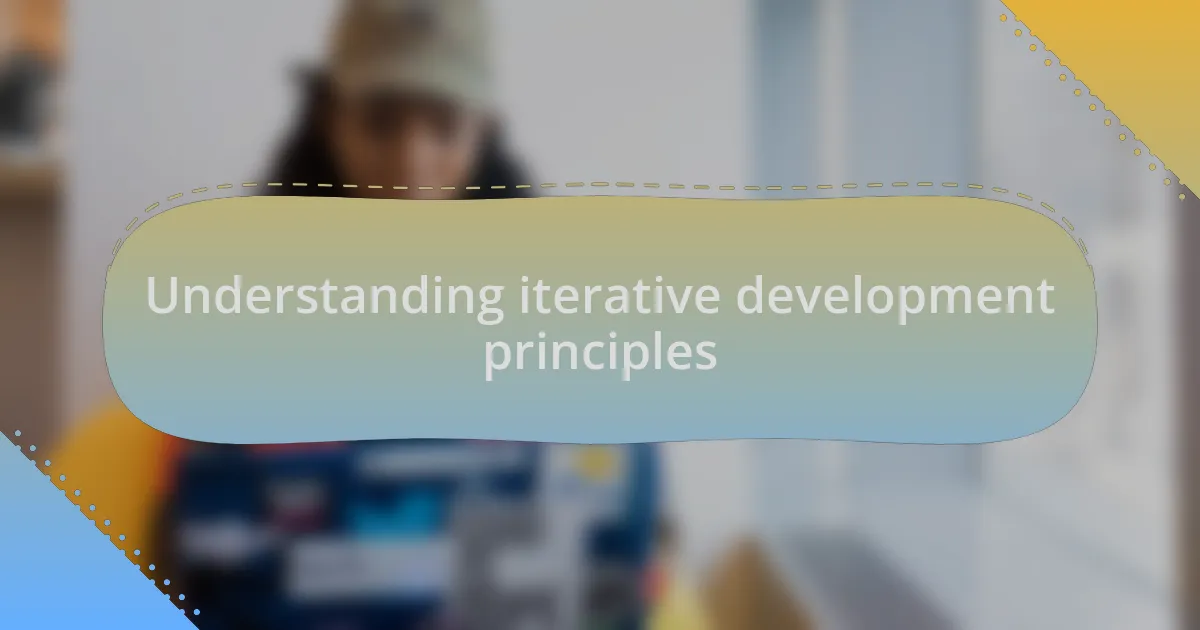
Understanding iterative development principles
Iterative development is fundamentally about embracing change. I remember when I first tackled a project using this approach—initially, I was hesitant, fearing that continuous adjustments might derail my timeline. However, as I progressed, I realized that each iteration not only improved my end product but also provided valuable insight into my users’ needs. Isn’t it fascinating how feedback transforms a basic idea into something truly impactful?
At its core, iterative development encourages exploration and flexibility. Each loop or iteration acts as a learning opportunity, allowing developers to refine their designs and functionalities based on real user input. This was particularly eye-opening for me during a web application project; as I released early versions, the user feedback was instrumental in shaping my application’s usability in ways I hadn’t previously considered.
Another principle lies in collaboration and communication. In my experience, when everyone involved feels free to share their ideas during each iteration, the project thrives. I recall a team meeting where a single suggestion sparked a completely different solution, leading us in a direction I hadn’t imagined. How often do we overlook the potential of diverse team input in our projects? Embracing collaborative discussions can not only foster creativity but also strengthen the team dynamic.
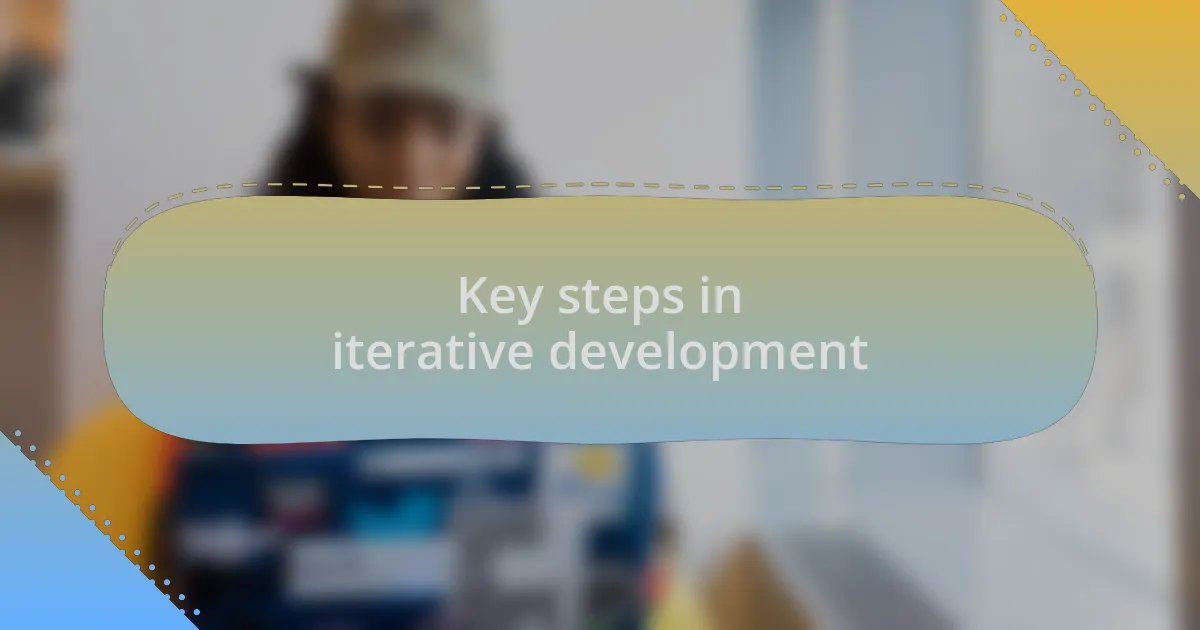
Key steps in iterative development
One of the key steps in iterative development is defining clear objectives for each iteration. Early in my journey, I learned that setting specific goals helped keep my team focused and aligned. In a project where we aimed to enhance user engagement, I vividly remember how breaking down the larger goal into smaller tasks allowed us to tackle each element methodically, leading to significant improvements.
Another vital aspect is implementing user testing at each iteration. Reflecting on a web development project, we conducted regular testing sessions that provided immediate feedback. I’ll always remember the moment when users interacted with a new feature and their reactions guided our next steps. It’s amazing how a simple observation from real users can guide your development path in a direction you hadn’t anticipated.
Lastly, evaluating each iteration is essential. I find it crucial to take a step back after each cycle and assess what worked and what didn’t. For instance, after one of our releases, we realized that a particular design element was more confusing than anticipated. This retrospective evaluation led us to rethink our approach entirely. Isn’t it liberating to view each misstep as a stepping stone to greater understanding?
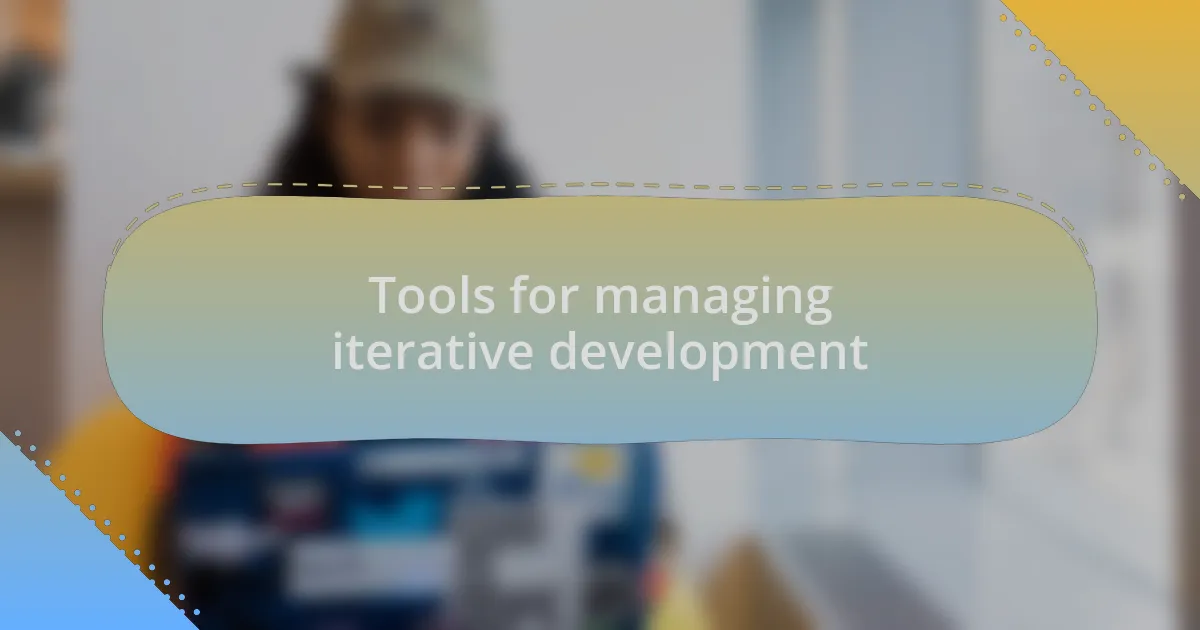
Tools for managing iterative development
Effective management of iterative development heavily relies on the right tools. I’ve found that using project management software like Trello or Jira can make a world of difference. When my team used Trello for a particularly complex project, we could visualize our workflow and prioritize tasks easily, which helped eliminate bottlenecks. Have you ever felt overwhelmed by too many tasks? These tools can break down workloads into manageable pieces, easing that burden.
Collaboration tools are also essential in maintaining smooth communication among team members. I remember a time when we switched to Slack for real-time discussions; it transformed our workflow. The ability to ask quick questions and share updates without waiting for emails made us so much more agile. Isn’t it fascinating how simple communication shifts can lead to more dynamic teamwork?
When it comes to tracking progress, using version control systems like Git is invaluable. There was a project where we experienced a major setback due to conflicting code changes. Once we integrated Git, managing our code became a collaborative effort, allowing us to roll back to stable versions seamlessly. How often do you think about maintaining code integrity? With the right tools, ensuring that your project stays on track becomes a shared responsibility, ultimately leading to a smoother iterative process.
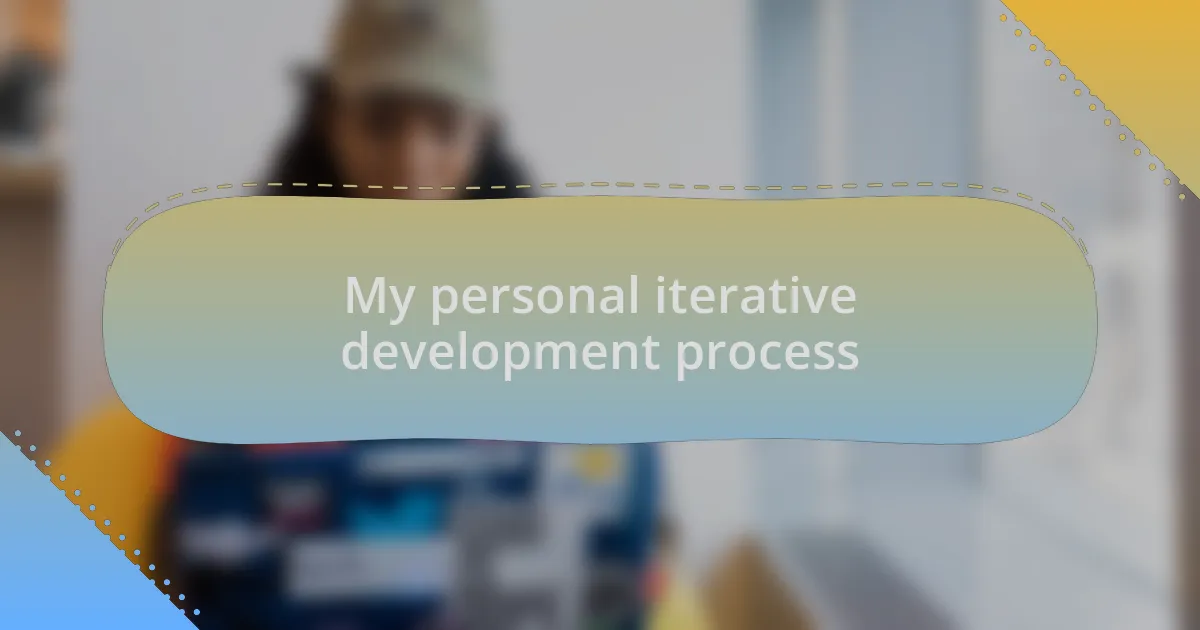
My personal iterative development process
My iterative development process starts with breaking down the project into smaller, manageable tasks. I vividly remember a project where initially, I felt lost in the overwhelming scale of the work ahead. By compartmentalizing it into individual components, I not only felt a sense of control but also a thrill with each small task I completed. Have you ever experienced that satisfying moment when you check off a task? It’s not just about progress; it’s about cultivating momentum.
In each iteration, I focus on collecting feedback early and often. During one memorable project, after sharing my early prototypes with colleagues, their insights sparked ideas I hadn’t considered. It was enlightening to see how external perspectives could open avenues for improvement. It’s a reminder that collaboration can prevent tunnel vision—isn’t it incredible how others’ viewpoints can enhance our own work?
Testing is a crucial part of my process. I always incorporate usability testing after every iteration, as I learned from an encounter where a minor oversight resulted in major user frustration. The immediate feedback from users has been a revelation, steering my development in the right direction. Have you ever wished you could sidestep avoidable pitfalls? I’ve found that early testing not only saves time but enriches the end product significantly.
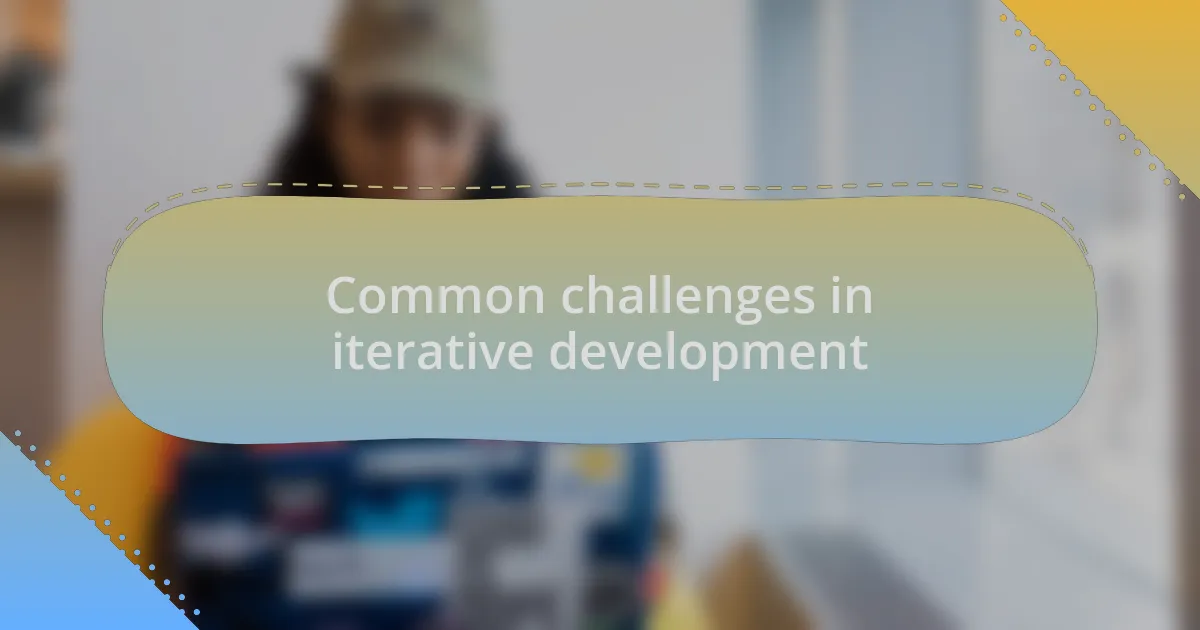
Common challenges in iterative development
One significant challenge I’ve faced in iterative development is the resistance to change, both within myself and among team members. I recall a project where I was deeply attached to a specific feature I initially designed. When the feedback suggested scrapping it altogether, my first reaction was defensive. Yet, I was reminded that flexibility is essential; embracing change can lead to a more polished final product. How do you handle resistance to change in your own projects?
Time management can also be tricky in iterative development. I’ve experienced instances where a single iteration took significantly longer than expected. It’s easy to lose track of time when you’re engrossed in refining details. I’ve learned to set clear time frames for each phase, which not only keeps the project moving forward but also preserves my sanity. Have you ever felt like time simply slipped away while coding?
Lastly, communication tends to become a slippery slope if not carefully managed. I remember working with a diverse team where misunderstandings about project goals led to repeated revisions. It was frustrating to see rework pile up due to misalignment. I’ve since realized that establishing clear communication channels early on can save countless hours and ensure that everyone is on the same page. Wouldn’t you agree that consistent check-ins can be a game-changer?